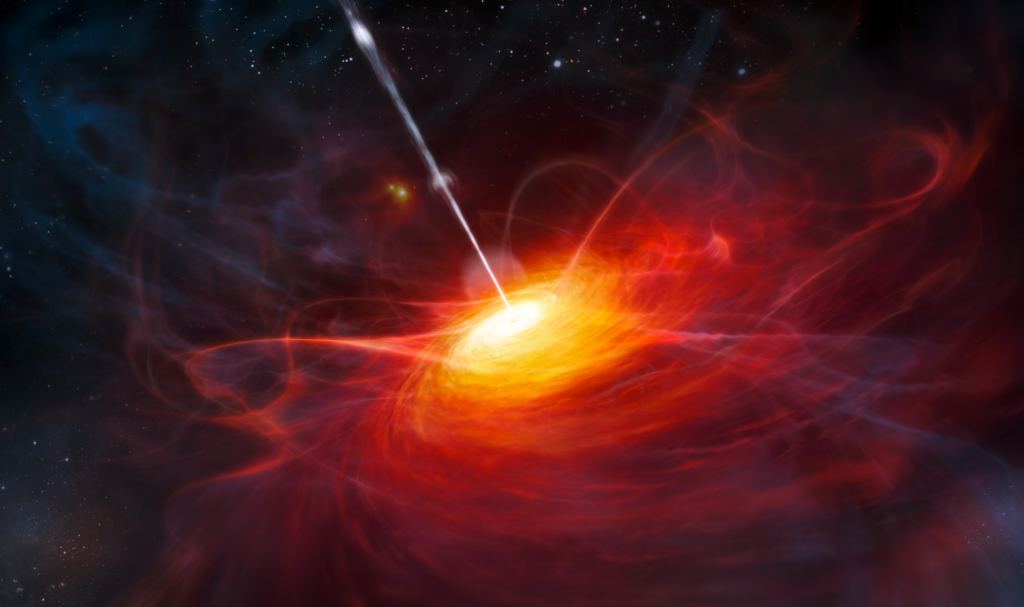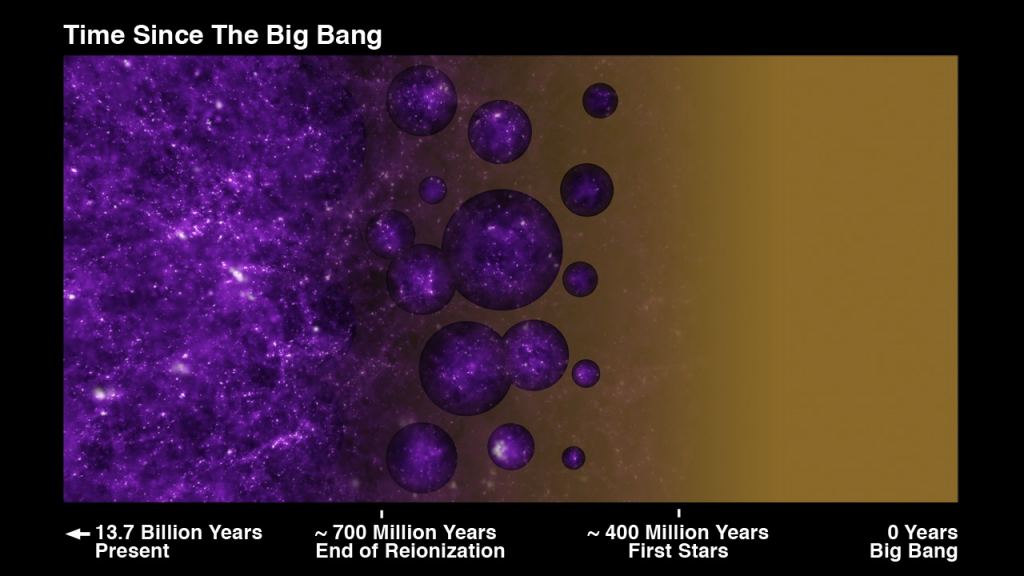One of the main scientific objectives of the observatories of the next generation (as The James Webb Space Telescope) has been to observe the first galaxies in the Universe – those that existed at the Cosmic Dawn. This period is when the first stars, galaxies, and black holes formed in our Universe, roughly 50 million to 1 billion years after the Big Bang. By examining how these galaxies formed and evolved during the earliest cosmological epochs, astronomers will gain a complete picture of how the Universe has changed over time.
As discussed in previous articles, the results of WebbHis most distant observations have brought some surprises. In addition to discovering that galaxies formed rapidly in the early Universe, astronomers also noticed that these galaxies had particularly massive supermassive black holes (SMBHs) at their centers. This was particularly confusing since, according to conventional models, these galaxies and black holes did not have enough time to form. In a recent study, a team led by Penn State astronomers has developed a model that may explain how SMBHs grew so quickly in the early Universe.
The research team was led by W. Niel Brandt, Eberly Family Chair Professor of Astronomy and Astrophysics in Penn State’s Eberly College of Science. Their research is described in two papers presented at the 244th meeting of the American Astronomical Society (AAS224), which took place from June 9 to June 13 in Madison, Wisconsin. Their first paper, “Mapping the accretion of supermassive black holes as a function of galaxy stellar mass and redshift,” appeared March 29 in The Astrophysical Journal, while the second is awaiting publication. Fan Zou, a graduate student at Eberly College, was the lead author of both papers.

As they note in their paper, SMBHs grow through two main channels: accreting cool gas from their host galaxy or merging with other galaxies’ SMBHs. When it comes to accretion, previous research has shown that a black hole’s accretion rate (BHAR) is strongly related to the stellar mass of its galaxy and the redshift of its total stellar population. “Supermassive black holes at the centers of galaxies have millions to billions of times the mass of the Sun,” Zhou explained in a recent NASA press release. How do they become such monsters? This is a question that astronomers have studied for decades, but it has been difficult to trace all the ways that black holes can grow reliably.”
For their research, the team relied on X-ray sky survey data obtained by NASA’s Chandra X-ray Observatory, ESA’s X-ray Multiple Mirror Mission-Newton (XMM-Newton) and Max Planck Institute for Extraterrestrial Physics. eROSITA telescope. They measured accretion-driven growth in a sample of 8,000 active galactic nuclei (AGN) located in 1.3 million galaxies. This was combined with IllustrisTNG, a suite of state-of-the-art cosmological simulations modeling the formation, evolution and mergers of galaxies from the Cosmic Dawn to the present day. This combined approach has provided the best modeling to date of SMBH growth over the past 12 billion years. Brandt said:
“During the process of consuming gas from their host galaxies, black holes emit strong X-rays, and this is the key to tracking their accretion growth. We measured accretion-driven growth using X-ray sky survey data collected over more than 20 years from three of the most powerful X-ray objects ever launched into space.
“In our hybrid approach, we combine observed accretion with simulated accretion through mergers to reproduce the accretion history of supermassive black holes. With this new approach, we believe we have produced the most realistic picture of the growth of supermassive black holes to date.”

Their results show that SMBHs of all masses grew much faster when the Universe was younger and that accretion was the main driver of black hole growth in most cases. They also noted that mergers made significant secondary contributions, particularly the larger SMBHs over the past 5 billion years. This suggests that new SMBHs continued to appear during the early Universe, but the formation process only resolved around ca. 7 billion years ago. As Zou concluded:
“With our approach, we can trace how central black holes in the local universe most likely grow over cosmic time. As an example, we considered the growth of the supermassive black hole at the center of our Milky Way galaxy, which has a mass of 4 million solar masses. Our results show that our Galaxy’s black hole most likely grew relatively late in cosmic time.”
In addition to Zou and Brandt, the international team consisted of researchers from the Institute for Gravitation and Cosmos and Penn State’s Departments of Physics, Statistics, and Astronomy and Astrophysics. Other team members included researchers from the University of Michigan, Nanjing University in China, the University of Science and Technology of China, the Max Planck Institute for Extraterrestrial Physics and the University of Groningen in the Netherlands.
Further reading: Chandra X-ray Observatory, The Astrophysical Journal
#simulation #explains #supermassive #black #holes #grew #quickly
Image Source : www.universetoday.com